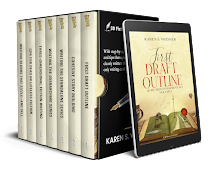The Disney animated PETER PAN, to nobody's surprise I'm sure, softens and lightens the source material. Generations of children who've never read or viewed J. M. Barrie's book or play may have grown up imagining Neverland as a carefree realm of adventure offering sometimes scary thrills but no danger of permanent harm, where Peter will help you get home to your family in the end. The animated sequel does include a hint of one uncanny feature of Peter's character, his "out of sight, out of mind" tendency to forget people and events. Only a hint, though, which doesn't last long, when he -- like Captain Hook -- intially mistakes Wendy's daughter for Wendy herself. In the novel, he forgets enemies after killing them, and he doesn't remember Tinker Bell. Fairies have such short lives, after all, and there are so many of them.
In the live-action film HOOK, Peter Pan has become a man in our world and forgotten his past in Neverland. The movie focuses on recapturing the alleged magical joys of childhood. Barrie, however, describes children as "innocent and heartless." Peter Pan is innocent, not in the sense of being good, but of being oblivious to good and evil. People die in his Neverland. Not only does Peter blithely slay pirates, when Lost Boys start to grow up (which is forbidden) he "thins them out." I've always considered the concept of not wanting to grow up rather creepy, anyway. Have you ever met a real-life child who wasn't eager for adulthood?
What I think of as the fanfic impulse inspires writers to deconstruct and re-imagine works of fiction in order to answer questions left hanging, explore the viewpoints of characters not fully developed in the original, compose scenes and side stories that might have occurred offstage, speculate on what happened after "The End," or flip the script altogether for a fresh perspective. If we're fascinated by a story and its characters, we want more of them. If the author doesn't satisfy that desire, we sometimes try to do it for ourselves. I've just read THE ADVENTURES OF MARY DARLING, by Pat Murphy. As the title implies, it considers what Mary, mother of Wendy, John, and Michael, does after they vanish through the open window. Not sit around waiting and fretting! To rescue her children, she embarks on an Edwardian-era adventure from London to the other side of the world, returning to the island of Neverland where she, too, was taken as a child. Murphy's version of the tale envisions Peter Pan as, not a runaway child, but some sort of ancient nature spirit wearing the body and personality of a self-absorbed little boy. If a Lost Boy dies or leaves, Peter forgets and replaces him, giving new children the names of previous ones. Hence the island hosts a succession of multiple Curlys, Tootleses, Twins, etc. The Lost Boys are ragged, dirty, and more often than not hungry. (Peter, in keeping with his changeless existence, doesn't need to eat.) The author's afterword quotes several passages from Barrie's novel to illustrate the underlying grimness of Neverland.
A few of the many other revisits to Neverland: WENDY, DARLING, by A. C. Wise -- as an adult, Wendy returns to Neverland to rescue her daughter, Jane, who has been lured away by Peter Pan. In Wise's sequel, HOOKED, the pirate captain, who has "died a thousand times," repeatedly resurrected by Peter's magic, ends up in London and allies with Wendy. Christina Henry's LOST BOY portrays Captain Hook as a former friend of Peter, his very first Lost Boy, in fact, and traces their evolution from friends to enemies. Jody Lynn Anderson's TIGER LILY views Peter through the eyes of the title character, in love with him and threatened by the arrival of Wendy. THE CHILD THIEF, a dark novel by Brom (both a fantasy writer and an artist), reveals Peter's ulterior motive for offering lost or abused children a refuge in his faerie realm. PETER DARLING, by Austin Chant, especially captivated me; in this novel, Peter is Wendy, or vice versa. When Wendy outs herself as a boy named Peter, her parents naturally think he/she is deranged; the magic of Neverland allows him to live as his true self. The island, though, is far from a paradise, and here, too, Peter and Hook have a complicated relationship.
PETER PAN has never been one of my top favorites, because of the absurdity (as it seems to me) of the "not wanting to grow up" premise. I've always been attracted by its uncanny, dark aspects, though, as well as the strangeness of PETER PAN IN KENSINGTON GARDENS. Therefore, I'm intrigued by published "fanfic" that expands on various hints in the original and explores its world from different perspectives.
Margaret L. Carter
Please explore love among the monsters at Carter's Crypt.



































